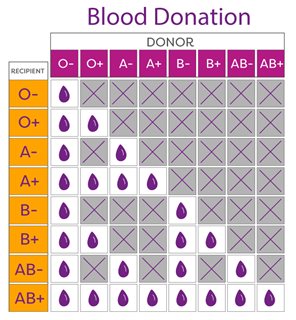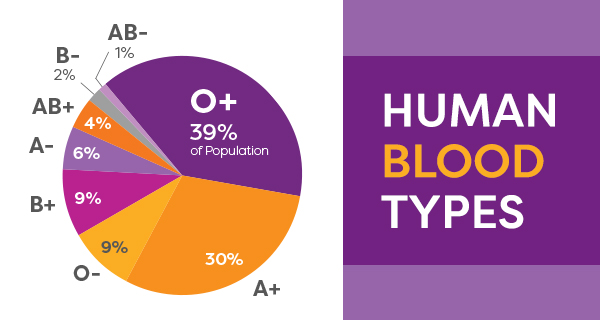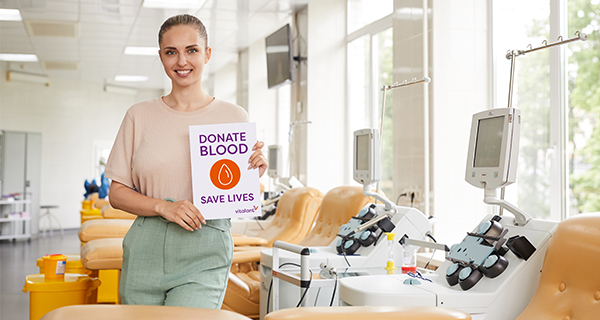Let’s be honest, science-y stuff can feel overwhelming to many, and biology was not everyone’s forte back in school (no offense, Louis Pasteur!). But don’t worry, because we’ve got you covered with a fun recap and a colorful blood type chart.
Blood donations save lives — really! In fact, 1 in every 7 people entering a hospital needs blood. To compound the difficulty of medical emergencies and our country’s constant need for blood, not every blood type is compatible with every other blood type.
But why, exactly?
Human blood falls into four different blood groups: A, B, AB and O. Your blood also has what is known as an Rh factor — short for rhesus, in case you were wondering. It either contains a certain protein or it doesn’t. (This is the positive [+] or negative [-] after your blood type.) If your blood has the Rh factor, you’re Rh positive; if your blood lacks the Rh factor, you’re Rh negative. Piece of cake, right?
Now you must be wondering, between the four different blood groups and the Rh factor, how many blood types are there? Scientists classify blood groups as one of eight types:
- Type A+
- Type A-
- Type B+
- Type B-
- Type AB+
- Type AB-
- Type O+
- Type O-
Blood types must be matched correctly so you don’t have a reaction to the transfusion, which can be deadly. For quick reference, here’s that easy-peasy blood type compatibility chart we promised you, which shows which blood types can be safely transfused with one another:
.jpg)
We know what you’re thinking right about now: Can we go back to the part about incompatible blood types being deadly?
There’s no reason to worry. The blood services industry goes to great lengths to ensure the safety of both donor and patient, so when you donate blood, know every precaution is taken to ensure no harm comes to you or others!
In fact, before your blood is transfused to a patient, it gets tested for ABO blood type and Rh factor; unexpected antibodies to red blood cells; and a variety of diseases. Provided your blood is disease-free and passes these tests with flying colors, only then would it be given to a patient.
Just for fun, are you curious about how rare your blood type is? Look no further than this cool blood drop-shaped graphic:.jpg)
Not sure what blood type you are? We’ve got you covered! If you don’t know your blood type, not only can you still donate blood, you’ll find out after you donate. Just make an appointment, show up and in a few days, your blood type will be posted in your private donor profile online. It’s that easy! Your donation could save up to 3 lives, and you’ll learn something interesting about yourself in the process. Learn more about blood donation.
Bring a friend, family member or coworker with you to your appointment — or two or three. That way, you can make an even greater impact on patients undergoing orthopedic surgery, experiencing trauma, or battling cancer and blood disorders. You’ll also have someone to hang out with during your lifesaving activity.
It’s the blood already on shelves that saves lives. Start saving lives by scheduling your appointment today.
We look forward to seeing you soon.

